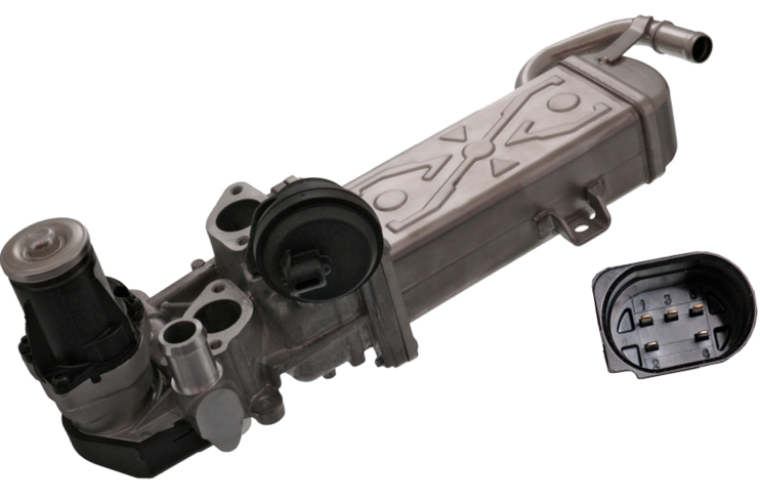An important component to reduce vehicle emissions and ensure Euro 6 standards are met is the exhaust gas recirculation (EGR) cooler, Febi reports.
In a press release, Febi said: “The EGR cooler uses engine coolant to reduce exhaust temperatures, helping to prevent the formation of oxides and pollutants such as nitrogen oxide (NOx).
“Once the combustion temperatures have been cooled, the gas is recirculated through the engine’s intake system.
“This helps to reduce pollutants, and thermal stress on cylinder head gaskets and exhaust valves, helping to extend component life.
“Not all vehicles have EGR coolers, but for those that do, it is a vital component to ensure driving performance is maintained.
“Over time, carbon can build up in the EGR cooler which causes a restriction of the coolant flow.”
Symptoms of a worn, clogged or faulty EGR cooler
- Engine overheating: if coolant flow is restricted, the EGR cooler is unable to cool the exhaust gases. This not only allows NOx emissions to continue, it also causes overheating which can cause serious damage.
- Loss of coolant from the cooling system: this could be causing an internal leak in the exhaust system that could result in poor engine performance, and even cause more costly repairs.
- Check engine light flashes on the dashboard: restricted flow, or a problem with the exhaust function can activate the check engine light. However, as a wide variety of other issues would flag the same warning light, it is important to take your vehicle to a professional technician, so that a diagnostic check can be performed.
Febi supply OE matching quality EGR coolers for a variety of German vehicles.
Febi also supply almost 30 different EGR valves in the range, with nearly 2,000 applications for a variety of vehicle makes and models.
Find Febi’s range of engine and transmission parts on Febi Live by clicking ‘more details’ below.








Chris
“Over time, carbon can build up in the EGR cooler which causes a restriction of the coolant flow”
Surely this is factually incorrect. Coolant is not in direct contact with exhaust gasses, unless the egr cooler has failed internally, so carbon build up would only reduce the effectiveness of heat transfer between the exhaust gasses and coolant.
NALUMENYA DANIEL
what is the difference in performance between a vehicle with EGR cooler and a vehicle without EGR cooler. if there is a difference, what brings it?